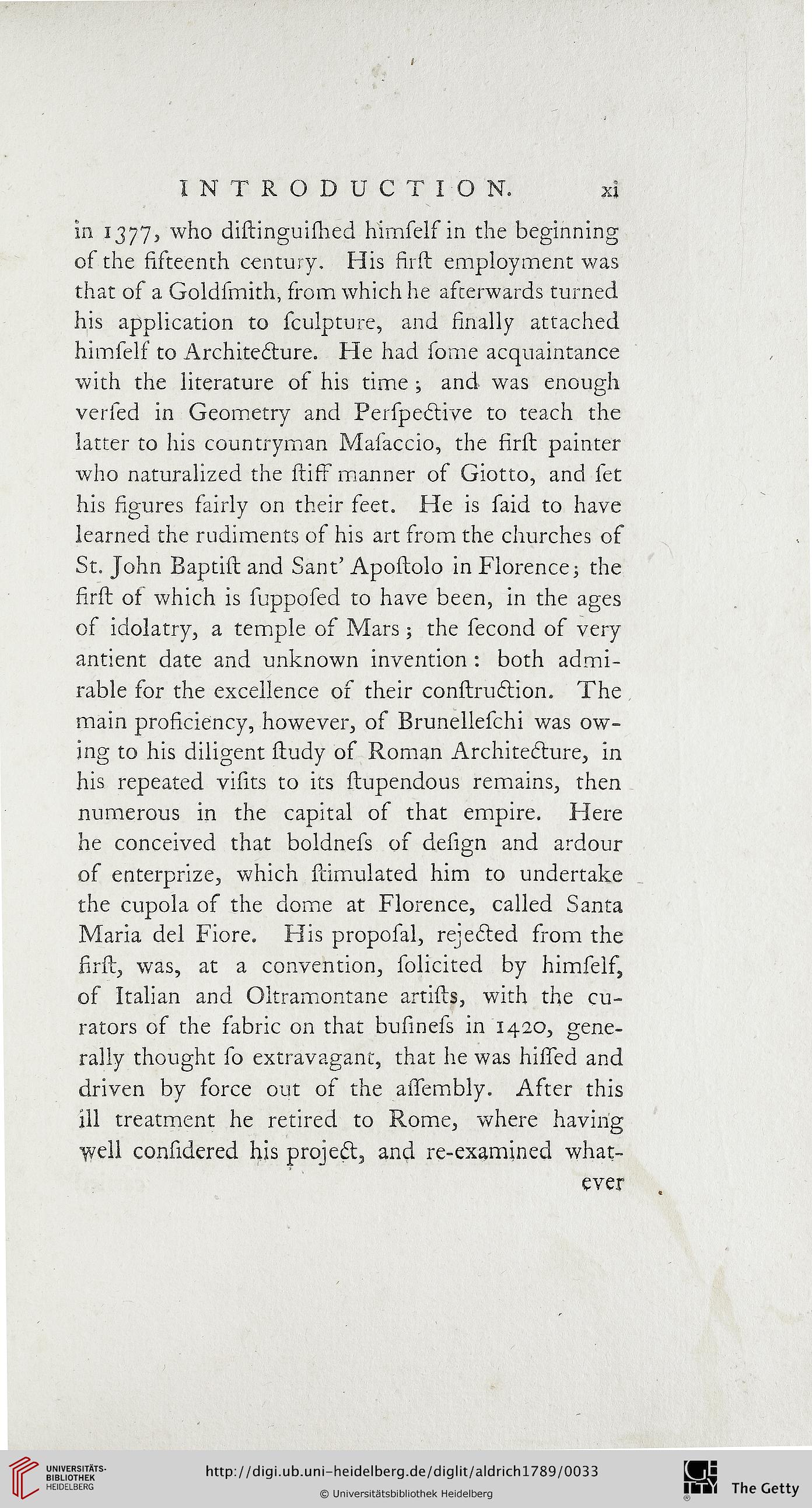INTRODUCTION. xl
in 1377, who distinguished himself in the beginning
of the fifteenth century. His fir st employment was
that of a Goldsmith, from which he afterwards turned
his application to sculpture, and sinally attached
himself to Architecture. He had some acquaintance
with the literature of his time ; and was enough
versed in Geometry and PerspeCtive to teach the
latter to his countryman Masaccio, the first painter
who naturalized the stifF manner of Giotto, and let
his figures fairly on their feet. He is said to have
learned the rudiments of his art from the churches os
St. John Baptist and Sant’ Apostolo in Florence; the
first of which is supposed to have been, in the ages
of idolatry, a temple of Mars; the second of very
antient date and unknown invention : both admi-
rable for the excellence os their construCtion. The
main proficiency, however, of Brunelleschi was ow-
ing to his diligent study of Roman Architecture, in
his repeated visits to its stupendous remains, then
numerous in the capital of that empire. Here
he conceived that boldness os design and ardour
of enterprize, which stimulated him to undertake
the cupola of the dome at Florence, called Santa
Maria del Fiore. His proposal, rejected from the
first, was, at a convention, solicited by himself,
of Italian and Oltramontane artists, with the cu-
rators of the fabric on that business in 1420, gene-
rally thought so extravagant, that he was hilled and
driven by force out os the aiTembly. After this
ill treatment he retired to Rome, where having
well considered his projeCl, and re-examined what-
ever
in 1377, who distinguished himself in the beginning
of the fifteenth century. His fir st employment was
that of a Goldsmith, from which he afterwards turned
his application to sculpture, and sinally attached
himself to Architecture. He had some acquaintance
with the literature of his time ; and was enough
versed in Geometry and PerspeCtive to teach the
latter to his countryman Masaccio, the first painter
who naturalized the stifF manner of Giotto, and let
his figures fairly on their feet. He is said to have
learned the rudiments of his art from the churches os
St. John Baptist and Sant’ Apostolo in Florence; the
first of which is supposed to have been, in the ages
of idolatry, a temple of Mars; the second of very
antient date and unknown invention : both admi-
rable for the excellence os their construCtion. The
main proficiency, however, of Brunelleschi was ow-
ing to his diligent study of Roman Architecture, in
his repeated visits to its stupendous remains, then
numerous in the capital of that empire. Here
he conceived that boldness os design and ardour
of enterprize, which stimulated him to undertake
the cupola of the dome at Florence, called Santa
Maria del Fiore. His proposal, rejected from the
first, was, at a convention, solicited by himself,
of Italian and Oltramontane artists, with the cu-
rators of the fabric on that business in 1420, gene-
rally thought so extravagant, that he was hilled and
driven by force out os the aiTembly. After this
ill treatment he retired to Rome, where having
well considered his projeCl, and re-examined what-
ever





